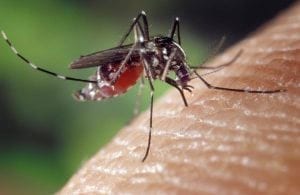As our understanding of genetics continues to grow, new gene variants are being identified and linked to the development of various diseases. According to Medical XPress, a research team from Northwestern Medicine sought to understand the relationship between gene mutations and microcephaly development.
Within their study, which was published in Nature Communications, the researchers sourced the results from whole exome sequencing from eleven people. These eleven people had microcephaly, along with cardiac abnormalities, anemia (low red blood cell count), and short stature.
After evaluating the results, the research team found SLF2 and SMC5 variants which they believed could play a role in microcephaly development. In particular, the researchers believed that these genetic mutations stopped cellular DNA repair and impaired protein stability.
To test the accuracy of this idea, SLF2 and SMC5 orthologs were disabled in zebrafish models. This deactivation contributed to a reduction in head size when comparing the zebrafish models with control zebrafish.
In the future, this research could contribute to a deeper understanding of microcephaly and the potential genetic processes that drive its development. These findings will also have positive implications for the future of genetic testing. By incorporating these genes into genetic panels or genetic sequencing tests, it could become easier to identify cases of microcephaly.
An Overview of Microcephaly
Microcephaly is a rare neurological condition in which an infant is born with an abnormally small head or the head stops growing after birth. When the head size is less than two standard deviations below the average, it can be considered microcephaly. It can be diagnosed via ultrasound in the third trimester or following birth. The exact cause is unknown, though severe malnutrition, alcohol and drug exposure, certain infections during pregnancy, craniosynostosis, blood supply disruption to the brain during birth, or genetic mutations are believed to play a role. As such, microcephaly may occur alone or with combination with other conditions or birth defects. Symptoms and characteristics can include:
- Developmental delays
- Hyperactivity
- Problems with movement, balance, and coordination
- Intellectual and cognitive delays
- Feeding problems (i.e. difficulty swallowing)
- Hearing and vision issues
- A backwards-sloping forehead
- Seizures
Treatment options and interventions are varied and can include anticonvulsants, physical therapy, and corrective surgery (in regards to craniosynostosis).







